Рейтинг книг Carl H. Klaus
Начиная изучать творчество писателя - уделите внимание произведениям, которые находятся на вершине этого рейтинга. Смело нажимайте на стрелочки - вверх и вниз, если считаете, что какое-то произведение должно находиться выше или ниже в списке. В результате общих усилий, в том числе, на основании ваших оценок мы и получим самый адекватный рейтинг книг Carl H. Klaus.
-
1.
 What do the thousands of images of bras and panties on perfectly sculpted bodies that we see spread across billboards and magazines say about our society?
What do the thousands of images of bras and panties on perfectly sculpted bodies that we see spread across billboards and magazines say about our society? -
2.
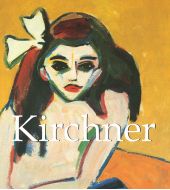 The self-appointed “leader” of the artists’ group Die Brücke (Bridge), founded in Dresden in 1905, Ernst Ludwig Kirchner was a key figure in the early development of German Expressionism. His first works show the influence of Impressionism, Post-impressionism and Jugendstil, but by about 1909, Kirchner was painting in a distinctive, expressive manner with bold, loose brushwork, vibrant and non-naturalistic colours and heightened gestures. He worked in the studio from sketches made very rapidly from life, often from moving figures, from scenes of life out in the city or from the Die Brücke group’s trips to the countryside. A little later he began making roughly-hewn sculptures from single blocks of wood. Around the time of his move to Berlin, in 1912, Kirchner’s style in both painting and his prolific graphic works became more angular, characterized by jagged lines, slender, attenuated forms and often, a greater sense of nervousness. These features can be seen to most powerful effect in his Berlin street scenes. With the outbreak of the First World War, Kirchner became physically weak and prone to anxiety. Conscripted, he was deeply traumatised by his brief experience of military training during the First World War. From 1917 until his death by suicide in 1938, he lived a reclusive, though artistically productive life in the tranquillity of the Swiss Alps, near Davos. ... Далее
The self-appointed “leader” of the artists’ group Die Brücke (Bridge), founded in Dresden in 1905, Ernst Ludwig Kirchner was a key figure in the early development of German Expressionism. His first works show the influence of Impressionism, Post-impressionism and Jugendstil, but by about 1909, Kirchner was painting in a distinctive, expressive manner with bold, loose brushwork, vibrant and non-naturalistic colours and heightened gestures. He worked in the studio from sketches made very rapidly from life, often from moving figures, from scenes of life out in the city or from the Die Brücke group’s trips to the countryside. A little later he began making roughly-hewn sculptures from single blocks of wood. Around the time of his move to Berlin, in 1912, Kirchner’s style in both painting and his prolific graphic works became more angular, characterized by jagged lines, slender, attenuated forms and often, a greater sense of nervousness. These features can be seen to most powerful effect in his Berlin street scenes. With the outbreak of the First World War, Kirchner became physically weak and prone to anxiety. Conscripted, he was deeply traumatised by his brief experience of military training during the First World War. From 1917 until his death by suicide in 1938, he lived a reclusive, though artistically productive life in the tranquillity of the Swiss Alps, near Davos. ... Далее -
3.
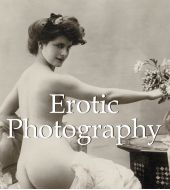 Erotic photo art has lost much of its exquisite soul since Playboy and other girlie monthlies repackaged the human body for mass-market consumption. Like much painting, sculpture and engraving, since its beginning photography has also been at the service of eroticism. This collection presents erotic photographs from the beginning of photography until the years just before World War II. It explores the evolution of the genre and its origins in France, and its journey from public distrust to the large audience it enjoys today. ... Далее
Erotic photo art has lost much of its exquisite soul since Playboy and other girlie monthlies repackaged the human body for mass-market consumption. Like much painting, sculpture and engraving, since its beginning photography has also been at the service of eroticism. This collection presents erotic photographs from the beginning of photography until the years just before World War II. It explores the evolution of the genre and its origins in France, and its journey from public distrust to the large audience it enjoys today. ... Далее -
4.
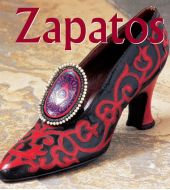 El volumen de Mega Square Zapatos se centra en la historia del zapato y eleva este objeto a la categoría de obra de arte. El autor es un destacado experto en la materia, así como el máximo responsable del Museo del Zapato de Francia, que cuenta con la mayor colección de zapatos del mundo, con 12.000 ejemplares. El título de Mega Square Zapatos presenta un tema diferente y apasionante en un formato práctico y compacto que lo convierte en un regalo perfecto. ... Далее
El volumen de Mega Square Zapatos se centra en la historia del zapato y eleva este objeto a la categoría de obra de arte. El autor es un destacado experto en la materia, así como el máximo responsable del Museo del Zapato de Francia, que cuenta con la mayor colección de zapatos del mundo, con 12.000 ejemplares. El título de Mega Square Zapatos presenta un tema diferente y apasionante en un formato práctico y compacto que lo convierte en un regalo perfecto. ... Далее -
5.
 Die Mega Square Ausgabe Schuhe präsentiert die Geschichte dieses Kleidungsstückes und erhebt es zu einem Kunstwerk. Der Autor ist ein führender Experte in diesem Gebiet und Kurator des französischen Schuh-Museums, welches mit 12 000 Exemplaren die größte Schuhsammlung der Welt besitzt. Dieses Buch ist das perfekte Geschenk für jede Schuh-Liebhaberin bzw. –Liebhaber und sein praktisches Format macht es zu einem idealen Geschenk. ... Далее
Die Mega Square Ausgabe Schuhe präsentiert die Geschichte dieses Kleidungsstückes und erhebt es zu einem Kunstwerk. Der Autor ist ein führender Experte in diesem Gebiet und Kurator des französischen Schuh-Museums, welches mit 12 000 Exemplaren die größte Schuhsammlung der Welt besitzt. Dieses Buch ist das perfekte Geschenk für jede Schuh-Liebhaberin bzw. –Liebhaber und sein praktisches Format macht es zu einem idealen Geschenk. ... Далее -
6.
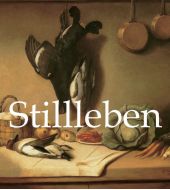 Cézanne gelang es mit einer Teetasse die Existenz des Lebens zu zeigen und er erhob Stillleben zu einem Punkt, an dem sie nicht mehr leblos zu sein schienen. Wassily Kandinsky sagte über den französischen Künstler: „Er malte diese Dinge als menschliche Wesen, da er die Gabe hatte, in allem ein Seele zu erahnen.“ Neben Cézanne präsentiert dieses Buch Stillleben großer Künstler wie Van Gogh, Matisse, Chardin und Picasso. Sein praktisches Format macht es zu einem perfekten Geschenk. ... Далее
Cézanne gelang es mit einer Teetasse die Existenz des Lebens zu zeigen und er erhob Stillleben zu einem Punkt, an dem sie nicht mehr leblos zu sein schienen. Wassily Kandinsky sagte über den französischen Künstler: „Er malte diese Dinge als menschliche Wesen, da er die Gabe hatte, in allem ein Seele zu erahnen.“ Neben Cézanne präsentiert dieses Buch Stillleben großer Künstler wie Van Gogh, Matisse, Chardin und Picasso. Sein praktisches Format macht es zu einem perfekten Geschenk. ... Далее -
7.
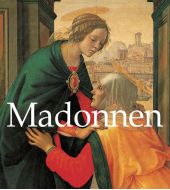 Zur Zeit der Renaissance porträtierten die italienischen Maler traditionell die Frauen ihrer Mäzene als Madonnen. Oft stellten sie sie schöner dar als sie in Wirklichkeit waren. Über Jahrhunderte hinweg wurde die Jungfrau Maria in religiösen Gemälden als milde und beschützende Mutter Gottes gemalt. Mit der Zeit verlor die Jungfrau allerdings viele ihrer spirituellen Charakterzüge und wurde menschlicher und zugänglicher. Das Mega Square Madonnen beleuchtet diese Evolution und enthält beeindruckende Werke von Michelangelo, Caravaggio, Rubens, Fouquet, Dalí und Kahlo. ... Далее
Zur Zeit der Renaissance porträtierten die italienischen Maler traditionell die Frauen ihrer Mäzene als Madonnen. Oft stellten sie sie schöner dar als sie in Wirklichkeit waren. Über Jahrhunderte hinweg wurde die Jungfrau Maria in religiösen Gemälden als milde und beschützende Mutter Gottes gemalt. Mit der Zeit verlor die Jungfrau allerdings viele ihrer spirituellen Charakterzüge und wurde menschlicher und zugänglicher. Das Mega Square Madonnen beleuchtet diese Evolution und enthält beeindruckende Werke von Michelangelo, Caravaggio, Rubens, Fouquet, Dalí und Kahlo. ... Далее -
8.
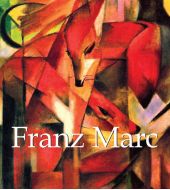 Franz Marc (1880-1916), bedeutender Künstler des deutschen Expressionismus und später von den Nationalsozialisten als entartet gebrandmarkt, war nicht nur ein enger Freund Wassily Kandinskys, sondern auch Mitbegründer des Künstleralmanachs Der Blaue Reiter„. In der Überwindung einer auf die Naturwahrnehmung begrenzten Kunst entwickelte Marc eine ihm einzigartige, emotionale Farb– und Formensprache, in der er die traumatischen und schmerzhaften Erinnerungen des Krieges verarbeitete. Der Ausdruck primitiver Gewalt in seinen Werken wie Tierschicksal erscheint rückblickend für Marc wie eine Vorahnung dieses Krieges„, der schließlich sein Leben bereits im Alter von 36 Jahren beenden sollte. Entdecken Sie zusammen mit Klaus H. Carl das Leben und Werk eines der herausragendsten deutschen Künstler des 20. Jahrhunderts. ... Далее
Franz Marc (1880-1916), bedeutender Künstler des deutschen Expressionismus und später von den Nationalsozialisten als entartet gebrandmarkt, war nicht nur ein enger Freund Wassily Kandinskys, sondern auch Mitbegründer des Künstleralmanachs Der Blaue Reiter„. In der Überwindung einer auf die Naturwahrnehmung begrenzten Kunst entwickelte Marc eine ihm einzigartige, emotionale Farb– und Formensprache, in der er die traumatischen und schmerzhaften Erinnerungen des Krieges verarbeitete. Der Ausdruck primitiver Gewalt in seinen Werken wie Tierschicksal erscheint rückblickend für Marc wie eine Vorahnung dieses Krieges„, der schließlich sein Leben bereits im Alter von 36 Jahren beenden sollte. Entdecken Sie zusammen mit Klaus H. Carl das Leben und Werk eines der herausragendsten deutschen Künstler des 20. Jahrhunderts. ... Далее -
9.
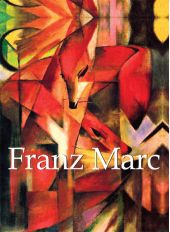 Franz Marc (1880-1916), bedeutender Künstler des deutschen Expressionismus und später von den Nationalsozialisten als entartet gebrandmarkt, war nicht nur ein enger Freund Wassily Kandinskys, sondern auch Mitbegründer des Künstleralmanachs Der Blaue Reiter„. In der Überwindung einer auf die Naturwahrnehmung begrenzten Kunst entwickelte Marc eine ihm einzigartige, emotionale Farb– und Formensprache, in der er die traumatischen und schmerzhaften Erinnerungen des Krieges verarbeitete. Der Ausdruck primitiver Gewalt in seinen Werken wie Tierschicksal erscheint rückblickend für Marc wie eine Vorahnung dieses Krieges„, der schließlich sein Leben bereits im Alter von 36 Jahren beenden sollte. Entdecken Sie zusammen mit Klaus H. Carl das Leben und Werk eines der herausragendsten deutschen Künstler des 20. Jahrhunderts. ... Далее
Franz Marc (1880-1916), bedeutender Künstler des deutschen Expressionismus und später von den Nationalsozialisten als entartet gebrandmarkt, war nicht nur ein enger Freund Wassily Kandinskys, sondern auch Mitbegründer des Künstleralmanachs Der Blaue Reiter„. In der Überwindung einer auf die Naturwahrnehmung begrenzten Kunst entwickelte Marc eine ihm einzigartige, emotionale Farb– und Formensprache, in der er die traumatischen und schmerzhaften Erinnerungen des Krieges verarbeitete. Der Ausdruck primitiver Gewalt in seinen Werken wie Tierschicksal erscheint rückblickend für Marc wie eine Vorahnung dieses Krieges„, der schließlich sein Leben bereits im Alter von 36 Jahren beenden sollte. Entdecken Sie zusammen mit Klaus H. Carl das Leben und Werk eines der herausragendsten deutschen Künstler des 20. Jahrhunderts. ... Далее -
10.
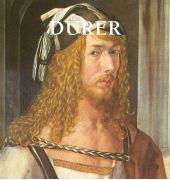 Der vielfach talentierte Albrecht Dürer nimmt einen bedeutenden Platz in der Geschichte der deutschen Kunst ein. In einer Zeit, in der die italienischen Künstler die klassischen Techniken der Ölmalerei, Bildhauerei und Architektur zu neuen Höhen perfektionierten und dadurch glaubten, dass sie das wahre Kunstmonopol besäßen, widmete Dürer sich einem eher vernachlässigten Medium, dass nur im Buchdruck zur Anwendung kam. Er befreite Holzschnitt und Kupferstich von dieser einseitigen Rolle, führte beide Techniken zur Perfektion und räumte ihnen einen Platz im Olymp der angesehenen künstlerischen Techniken ein. Eine Leistung, die sogar Giorgio Vasari in seinen Biographien berühmter Künstler würdigte. In diesem Buch werden nicht nur die bekanntesten seiner Meisterstiche und Stichzyklen aufgeführt, sondern auch seinen weniger beachteten Aquarellen die nötige Aufmerksamkeit gewidmet. ... Далее
Der vielfach talentierte Albrecht Dürer nimmt einen bedeutenden Platz in der Geschichte der deutschen Kunst ein. In einer Zeit, in der die italienischen Künstler die klassischen Techniken der Ölmalerei, Bildhauerei und Architektur zu neuen Höhen perfektionierten und dadurch glaubten, dass sie das wahre Kunstmonopol besäßen, widmete Dürer sich einem eher vernachlässigten Medium, dass nur im Buchdruck zur Anwendung kam. Er befreite Holzschnitt und Kupferstich von dieser einseitigen Rolle, führte beide Techniken zur Perfektion und räumte ihnen einen Platz im Olymp der angesehenen künstlerischen Techniken ein. Eine Leistung, die sogar Giorgio Vasari in seinen Biographien berühmter Künstler würdigte. In diesem Buch werden nicht nur die bekanntesten seiner Meisterstiche und Stichzyklen aufgeführt, sondern auch seinen weniger beachteten Aquarellen die nötige Aufmerksamkeit gewidmet. ... Далее -
11.
 Das vorliegende Werk zeichnet Velázquez’ Leben sowohl anhand seiner Werke als auch anhand seiner Reisen nach und berücksichtigt dabei neben der künstlerischen auch die königliche Szenerie im Spanien des 17. Jahrhunderts. Von seinen Anfängen bei Pacheco bis zu den letzten Jahren als Hofmaler porträtiert der mit einer unglaublichen Energie und Hingabe ausgestattete Maler die einflussreichsten Persönlichkeiten seiner Zeit und amtiert gleichzeitig als Reformer der prächtigen spanischen Paläste. So wie Velázquez durch sein Leben und seine erstaunliche Technik unvergessen bleibt, ist es ebenso eindrucksvoll, wie viele Porträts er hinterlassen hat. Mit dem Anspruch, seinen Text von den sonst üblichen Monographien abzugrenzen, behandelt Professor Carl Justi die Werke Velázquez’ in einem historischen Kontext, der das Goldene Zeitalter der Spanischen Malerei beschreibt. Durch die Fülle und Vielseitigkeit der Illustrationen ist Velázquez und sein Jahrhundert auf dem besten Wege, das Standardwerk auf seinem Gebiet zu werden. ... Далее
Das vorliegende Werk zeichnet Velázquez’ Leben sowohl anhand seiner Werke als auch anhand seiner Reisen nach und berücksichtigt dabei neben der künstlerischen auch die königliche Szenerie im Spanien des 17. Jahrhunderts. Von seinen Anfängen bei Pacheco bis zu den letzten Jahren als Hofmaler porträtiert der mit einer unglaublichen Energie und Hingabe ausgestattete Maler die einflussreichsten Persönlichkeiten seiner Zeit und amtiert gleichzeitig als Reformer der prächtigen spanischen Paläste. So wie Velázquez durch sein Leben und seine erstaunliche Technik unvergessen bleibt, ist es ebenso eindrucksvoll, wie viele Porträts er hinterlassen hat. Mit dem Anspruch, seinen Text von den sonst üblichen Monographien abzugrenzen, behandelt Professor Carl Justi die Werke Velázquez’ in einem historischen Kontext, der das Goldene Zeitalter der Spanischen Malerei beschreibt. Durch die Fülle und Vielseitigkeit der Illustrationen ist Velázquez und sein Jahrhundert auf dem besten Wege, das Standardwerk auf seinem Gebiet zu werden. ... Далее -
12.
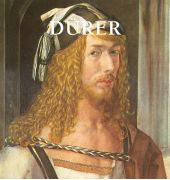 Der vielfach talentierte Albrecht Dürer nimmt einen bedeutenden Platz in der Geschichte der deutschen Kunst ein. In einer Zeit, in der die italienischen Künstler die klassischen Techniken der Ölmalerei, Bildhauerei und Architektur zu neuen Höhen perfektionierten und dadurch glaubten, dass sie das wahre Kunstmonopol besäßen, widmete Dürer sich einem eher vernachlässigten Medium, dass nur im Buchdruck zur Anwendung kam. Er befreite Holzschnitt und Kupferstich von dieser einseitigen Rolle, führte beide Techniken zur Perfektion und räumte ihnen einen Platz im Olymp der angesehenen künstlerischen Techniken ein. Eine Leistung, die sogar Giorgio Vasari in seinen Biographien berühmter Künstler würdigte. In diesem Buch werden nicht nur die bekanntesten seiner Meisterstiche und Stichzyklen aufgeführt, sondern auch seinen weniger beachteten Aquarellen die nötige Aufmerksamkeit gewidmet. ... Далее
Der vielfach talentierte Albrecht Dürer nimmt einen bedeutenden Platz in der Geschichte der deutschen Kunst ein. In einer Zeit, in der die italienischen Künstler die klassischen Techniken der Ölmalerei, Bildhauerei und Architektur zu neuen Höhen perfektionierten und dadurch glaubten, dass sie das wahre Kunstmonopol besäßen, widmete Dürer sich einem eher vernachlässigten Medium, dass nur im Buchdruck zur Anwendung kam. Er befreite Holzschnitt und Kupferstich von dieser einseitigen Rolle, führte beide Techniken zur Perfektion und räumte ihnen einen Platz im Olymp der angesehenen künstlerischen Techniken ein. Eine Leistung, die sogar Giorgio Vasari in seinen Biographien berühmter Künstler würdigte. In diesem Buch werden nicht nur die bekanntesten seiner Meisterstiche und Stichzyklen aufgeführt, sondern auch seinen weniger beachteten Aquarellen die nötige Aufmerksamkeit gewidmet. ... Далее -
13.
 Das vorliegende Werk zeichnet Velázquez’ Leben sowohl anhand seiner Werke als auch anhand seiner Reisen nach und berücksichtigt dabei neben der künstlerischen auch die königliche Szenerie im Spanien des 17. Jahrhunderts. Von seinen Anfängen bei Pacheco bis zu den letzten Jahren als Hofmaler porträtiert der mit einer unglaublichen Energie und Hingabe ausgestattete Maler die einflussreichsten Persönlichkeiten seiner Zeit und amtiert gleichzeitig als Reformer der prächtigen spanischen Paläste. So wie Velázquez durch sein Leben und seine erstaunliche Technik unvergessen bleibt, ist es ebenso eindrucksvoll, wie viele Porträts er hinterlassen hat. Mit dem Anspruch, seinen Text von den sonst üblichen Monographien abzugrenzen, behandelt Professor Carl Justi die Werke Velázquez’ in einem historischen Kontext, der das Goldene Zeitalter der Spanischen Malerei beschreibt. Durch die Fülle und Vielseitigkeit der Illustrationen ist Velázquez und sein Jahrhundert auf dem besten Wege, das Standardwerk auf seinem Gebiet zu werden. ... Далее
Das vorliegende Werk zeichnet Velázquez’ Leben sowohl anhand seiner Werke als auch anhand seiner Reisen nach und berücksichtigt dabei neben der künstlerischen auch die königliche Szenerie im Spanien des 17. Jahrhunderts. Von seinen Anfängen bei Pacheco bis zu den letzten Jahren als Hofmaler porträtiert der mit einer unglaublichen Energie und Hingabe ausgestattete Maler die einflussreichsten Persönlichkeiten seiner Zeit und amtiert gleichzeitig als Reformer der prächtigen spanischen Paläste. So wie Velázquez durch sein Leben und seine erstaunliche Technik unvergessen bleibt, ist es ebenso eindrucksvoll, wie viele Porträts er hinterlassen hat. Mit dem Anspruch, seinen Text von den sonst üblichen Monographien abzugrenzen, behandelt Professor Carl Justi die Werke Velázquez’ in einem historischen Kontext, der das Goldene Zeitalter der Spanischen Malerei beschreibt. Durch die Fülle und Vielseitigkeit der Illustrationen ist Velázquez und sein Jahrhundert auf dem besten Wege, das Standardwerk auf seinem Gebiet zu werden. ... Далее -
14.
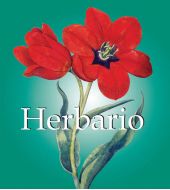 El volumen de Mega Square Herbario está basado en la obra de Basilius Besler, el famoso experto en plantas que, por primera vez en la historia, describió, pintó y grabó más de mil especies de plantas. Sus dibujos son de gran valor tanto científico como artístico y constituyen un vívido testimonio de la ecléctica flora europea. Esta edición de Mega Square, que presenta un tema interesante y original en un formato compacto y práctico, constituye un regalo perfecto. ... Далее
El volumen de Mega Square Herbario está basado en la obra de Basilius Besler, el famoso experto en plantas que, por primera vez en la historia, describió, pintó y grabó más de mil especies de plantas. Sus dibujos son de gran valor tanto científico como artístico y constituyen un vívido testimonio de la ecléctica flora europea. Esta edición de Mega Square, que presenta un tema interesante y original en un formato compacto y práctico, constituye un regalo perfecto. ... Далее -
15.
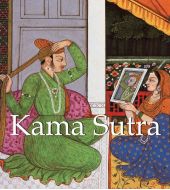 El volumen de Mega Square Kama Sutra es un manual educativo universal que rinde homenaje a la magia del amor. Esta edición cuenta con unas ilustraciones exquisitas que incluyen frescos primorosos y delicados grabados. El formato práctico y compacto de Mega Square hace de este libro un regalo perfecto. ... Далее
El volumen de Mega Square Kama Sutra es un manual educativo universal que rinde homenaje a la magia del amor. Esta edición cuenta con unas ilustraciones exquisitas que incluyen frescos primorosos y delicados grabados. El formato práctico y compacto de Mega Square hace de este libro un regalo perfecto. ... Далее -
16.
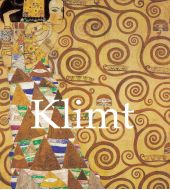 “No me intereso en mí mismo como tema de una pintura, sino en los demás… en especial en las mujeres…” Hermosas, sensuales y, sobre todo, eróticas, las pinturas de Gustav Klimt hablan de un mundo de opulencia y placer que parece estar a miles de años luz de distancia del rudo entorno posmoderno en el que vivimos ahora. Los temas que trata, alegorías, retratos, paisajes y figuras eróticas, no contienen prácticamente ninguna referencia a eventos externos, sino que tratan de crear un mundo en el que la belleza predomina sobre todo lo demás. El uso que hace del color y los patrones está profundamente influenciado por el arte japonés, el antiguo Egipto y Bizancio. Ravenna, la perspectiva plana y bidimensional de sus pinturas y la calidad con frecuencia estilizada de sus imágenes dan forma a una obra imbuida de una profunda sensualidad y en la que la figura femenina es soberana. Las primeras obras de Klimt le hicieron alcanzar el éxito a una edad muy temprana. Gustav nació en 1862 y consiguió una beca del estado para estudiar en la Kunstgewerbeschule (escuela de artes y oficios de Viena) a la edad de catorce años. Su talento como dibujante y pintor quedó de manifiesto muy pronto y en 1879 formó la Künstlercompagnie (Compañía de artistas) con su hermano Ernst y otro estudiante, Franz Matsch. La segunda mitad del siglo XIX fue un periodo de gran actividad en la arquitectura en Viena. En 1857, el emperador Francisco José había ordenado la destrucción de las fortificaciones que solían rodear el centro de la ciudad medieval. El resultado fue la Ringstrasse, un nuevo y floreciente distrito con magníficos edificios y hermosos parque, todo pagado por el erario público. Por lo tanto, el joven Klimt y sus asociados tuvieron muchas oportunidades de mostrar su talento, y recibieron comisiones para las decoraciones de la celebración de las bodas de plata del emperador Francisco José y la emperatriz Elisabeth. En 1894, Matsch se marchó del estudio comunal y en 1897, Klimt, junto con sus amigos más cercanos, renunciaron a la Künstlerhausgenossenschaft (Sociedad cooperativa de artistas austriacos) para formar un nuevo movimiento llamado la Secesión, del cual fue electo presidente de manera inmediata. La Secesión fue un gran éxito y en 1898 presentó no una, sino dos exposiciones. El movimiento logró ganar el suficiente dinero para comisionar su propio edificio, diseñado por el arquitecto Joseph Maria Olbrich. Sobre la entrada estaba escrito su lema: “A cada era su arte; al arte, su libertad”. Más o menos a partir de 1897, Klimt pasó casi todos los veranos en Attersee, con la familia Flöge. Fueron periodos de paz y tranquilidad en los que produjo paisajes que constituyeron casi un cuarto de la totalidad de su obra. Klimt realizó bocetos de prácticamente todo lo que hacía. En ocasiones realizaba más de cien dibujos para una pintura, cada uno con un detalle distinto, un traje, una joya o un simple gesto. La calidad excepcional de Gustav Klimt se refleja en el hecho de que no tuvo predecesores ni verdaderos seguidores. Admiró a Rodin y a Whistler sin copiarlos servilmente, y a su vez recibió la admiración de los pintores vieneses más jóvenes, como Egon Schiele y Oskar Kokoschka, cuya obra muestra una gran influencia de Klimt. ... Далее
“No me intereso en mí mismo como tema de una pintura, sino en los demás… en especial en las mujeres…” Hermosas, sensuales y, sobre todo, eróticas, las pinturas de Gustav Klimt hablan de un mundo de opulencia y placer que parece estar a miles de años luz de distancia del rudo entorno posmoderno en el que vivimos ahora. Los temas que trata, alegorías, retratos, paisajes y figuras eróticas, no contienen prácticamente ninguna referencia a eventos externos, sino que tratan de crear un mundo en el que la belleza predomina sobre todo lo demás. El uso que hace del color y los patrones está profundamente influenciado por el arte japonés, el antiguo Egipto y Bizancio. Ravenna, la perspectiva plana y bidimensional de sus pinturas y la calidad con frecuencia estilizada de sus imágenes dan forma a una obra imbuida de una profunda sensualidad y en la que la figura femenina es soberana. Las primeras obras de Klimt le hicieron alcanzar el éxito a una edad muy temprana. Gustav nació en 1862 y consiguió una beca del estado para estudiar en la Kunstgewerbeschule (escuela de artes y oficios de Viena) a la edad de catorce años. Su talento como dibujante y pintor quedó de manifiesto muy pronto y en 1879 formó la Künstlercompagnie (Compañía de artistas) con su hermano Ernst y otro estudiante, Franz Matsch. La segunda mitad del siglo XIX fue un periodo de gran actividad en la arquitectura en Viena. En 1857, el emperador Francisco José había ordenado la destrucción de las fortificaciones que solían rodear el centro de la ciudad medieval. El resultado fue la Ringstrasse, un nuevo y floreciente distrito con magníficos edificios y hermosos parque, todo pagado por el erario público. Por lo tanto, el joven Klimt y sus asociados tuvieron muchas oportunidades de mostrar su talento, y recibieron comisiones para las decoraciones de la celebración de las bodas de plata del emperador Francisco José y la emperatriz Elisabeth. En 1894, Matsch se marchó del estudio comunal y en 1897, Klimt, junto con sus amigos más cercanos, renunciaron a la Künstlerhausgenossenschaft (Sociedad cooperativa de artistas austriacos) para formar un nuevo movimiento llamado la Secesión, del cual fue electo presidente de manera inmediata. La Secesión fue un gran éxito y en 1898 presentó no una, sino dos exposiciones. El movimiento logró ganar el suficiente dinero para comisionar su propio edificio, diseñado por el arquitecto Joseph Maria Olbrich. Sobre la entrada estaba escrito su lema: “A cada era su arte; al arte, su libertad”. Más o menos a partir de 1897, Klimt pasó casi todos los veranos en Attersee, con la familia Flöge. Fueron periodos de paz y tranquilidad en los que produjo paisajes que constituyeron casi un cuarto de la totalidad de su obra. Klimt realizó bocetos de prácticamente todo lo que hacía. En ocasiones realizaba más de cien dibujos para una pintura, cada uno con un detalle distinto, un traje, una joya o un simple gesto. La calidad excepcional de Gustav Klimt se refleja en el hecho de que no tuvo predecesores ni verdaderos seguidores. Admiró a Rodin y a Whistler sin copiarlos servilmente, y a su vez recibió la admiración de los pintores vieneses más jóvenes, como Egon Schiele y Oskar Kokoschka, cuya obra muestra una gran influencia de Klimt. ... Далее -
17.
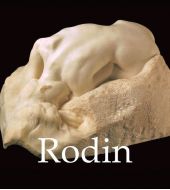 Auguste Rodin (1840-1917) intensiviertseine zeichnerische Tätigkeit als etwa 10-Jähriger und besucht ab 1854 in der Zeichen– und Mathematikschule La Petite ÉcoleKurse von Henri Lecoq de Boisbaudran (1802-1897) und des MalersJean-Hilaire Belloc (1786-1866). Dort entdeckt er für sich die Bildhauerei. Er verlässt 1857diese Schule und versucht, an der berühmten École nationale supérieure des beaux-artsaufgenommen zu werden, scheitert aber dreimal.Ab 1864 beginnt eineachtjährige Zusammenarbeit mit dem Bildhauer Albert-Ernest Cartier-Belleuse (1824-1887), der sich eine 1873 Kooperation mit dem belgischen Bildhauer Antoine-Joseph van Rasbourgh (1831-1902) anschließt. Zu seinen ersten großen Werken zählen u. a. Der Mann mit der gebrochenen Nase(1864), die später vom französischen Staat angekauftelebensgroße Figur Das eherne Zeitalter (1875/1876), der auch für das zukünftige Museum der dekorativen Künsteein nie fertiggestelltes Portalbestellte. Diesen Arbeiten folgten im Lauf der Jahreu. a. Der Kuss (1886),die Bürger von Calais(1889) und Der Schreitende(1877-1880 und 1900). Seine Hauptarbeit ist wohl Das Höllentor(1880-1817), an dem er 37 Jahre lang und bis kurz vor seinem Tod arbeitete und aus dem seine bekannteste andere Figur, Der Denker, stammt, dessen Kopie über dem Grab der ebenfalls 1917 gestorbenen, spät geheirateten Rose Beuret steht. ... Далее
Auguste Rodin (1840-1917) intensiviertseine zeichnerische Tätigkeit als etwa 10-Jähriger und besucht ab 1854 in der Zeichen– und Mathematikschule La Petite ÉcoleKurse von Henri Lecoq de Boisbaudran (1802-1897) und des MalersJean-Hilaire Belloc (1786-1866). Dort entdeckt er für sich die Bildhauerei. Er verlässt 1857diese Schule und versucht, an der berühmten École nationale supérieure des beaux-artsaufgenommen zu werden, scheitert aber dreimal.Ab 1864 beginnt eineachtjährige Zusammenarbeit mit dem Bildhauer Albert-Ernest Cartier-Belleuse (1824-1887), der sich eine 1873 Kooperation mit dem belgischen Bildhauer Antoine-Joseph van Rasbourgh (1831-1902) anschließt. Zu seinen ersten großen Werken zählen u. a. Der Mann mit der gebrochenen Nase(1864), die später vom französischen Staat angekauftelebensgroße Figur Das eherne Zeitalter (1875/1876), der auch für das zukünftige Museum der dekorativen Künsteein nie fertiggestelltes Portalbestellte. Diesen Arbeiten folgten im Lauf der Jahreu. a. Der Kuss (1886),die Bürger von Calais(1889) und Der Schreitende(1877-1880 und 1900). Seine Hauptarbeit ist wohl Das Höllentor(1880-1817), an dem er 37 Jahre lang und bis kurz vor seinem Tod arbeitete und aus dem seine bekannteste andere Figur, Der Denker, stammt, dessen Kopie über dem Grab der ebenfalls 1917 gestorbenen, spät geheirateten Rose Beuret steht. ... Далее -
18.
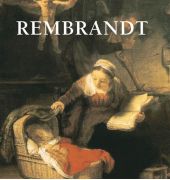 El espíritu, el carácter, la vida, la obra y el método de pintar de Rembrandt son un completo misterio. Lo que podemos adivinar de su naturaleza esencial proviene de sus pinturas y de incidentes triviales o trágicos de su infortunada existencia; su inclinación por la vida ostentosa lo obligó a declararse en bancarrota. Sus desgracias no son del todo comprensibles y su obra refleja ideas perturbadoras e impulsos contradictorios que emergen de las profundidades de su ser, como la luz y las sombras en sus cuadros. A pesar de todo, tal vez nada en la historia del arte causa una impresión más profunda de unidad que sus pinturas, compuestas de elementos tan distintos y llenos de significados complejos. El espectador siente que el intelecto de Rembrandt, esa mente genial, grandiosa, osada y libre de toda servidumbre que lo guiaba a través de las más elevadas reflexiones y los más sublimes ensueños, se deriva de la misma fuente que sus emociones. De ahí el trágico elemento que plasmó en todo lo que pintaba, sin importar el tema; en su obra coexiste la desigualdad con lo sublime, algo que puede parecer la consecuencia inevitable de una existencia tan tumultuosa. Pareciera como si aquella personalidad singular, extraña, atractiva y casi enigmática hubiera sido lenta para desarrollarse, o al menos para alcanzar su completa expansión. Rembrandt demostró talento y una visión original del mundo a muy temprana edad, como lo prueban sus grabados de la juventud y sus primeros autorretratos realizados alrededor de 1630. Sin embargo, en la pintura no encontró de inmediato el método necesario para expresar las cosas, todavía incomprensibles, que deseaba expresar; le faltaba ese método audaz, completo y personal que admiramos en las obras maestras de su madurez y ancianidad. A pesar de su sutileza, en su época se le juzgó brutal, lo que ciertamente contribuyó a alejar a su público. A pesar de ello, desde sus inicios y una vez logrado el éxito, la iluminación fue parte importante de su concepción de la pintura y la convirtió en el principal instrumento de sus investigaciones de los misterios de la vida interior. Ya le había revelado la poesía de la fisonomía humana cuando pintó El filósofo meditando o La Sagrada Familia, tan maravillosamente absorta en su modesta intimidad, o, por ejemplo, en El ángel Rafael dejando a Tobías. Muy pronto aquello no fue suficiente. La guardia nocturna marca de inmediato la apoteosis de su reputación. Tenía una curiosidad universal y vivía, meditaba, soñaba y pintaba replegado en sí mismo. De los grandes venecianos tomó prestados sus temas, convirtiéndolos en un arte que brotaba de una vida interior de emociones profundas. Los temas mitológicos y religiosos los trató de la misma manera que sus retratos. Todo lo que tomaba de la realidad y hasta de las obras de otros lo transmutaba al instante en parte de su propia sustancia. ... Далее
El espíritu, el carácter, la vida, la obra y el método de pintar de Rembrandt son un completo misterio. Lo que podemos adivinar de su naturaleza esencial proviene de sus pinturas y de incidentes triviales o trágicos de su infortunada existencia; su inclinación por la vida ostentosa lo obligó a declararse en bancarrota. Sus desgracias no son del todo comprensibles y su obra refleja ideas perturbadoras e impulsos contradictorios que emergen de las profundidades de su ser, como la luz y las sombras en sus cuadros. A pesar de todo, tal vez nada en la historia del arte causa una impresión más profunda de unidad que sus pinturas, compuestas de elementos tan distintos y llenos de significados complejos. El espectador siente que el intelecto de Rembrandt, esa mente genial, grandiosa, osada y libre de toda servidumbre que lo guiaba a través de las más elevadas reflexiones y los más sublimes ensueños, se deriva de la misma fuente que sus emociones. De ahí el trágico elemento que plasmó en todo lo que pintaba, sin importar el tema; en su obra coexiste la desigualdad con lo sublime, algo que puede parecer la consecuencia inevitable de una existencia tan tumultuosa. Pareciera como si aquella personalidad singular, extraña, atractiva y casi enigmática hubiera sido lenta para desarrollarse, o al menos para alcanzar su completa expansión. Rembrandt demostró talento y una visión original del mundo a muy temprana edad, como lo prueban sus grabados de la juventud y sus primeros autorretratos realizados alrededor de 1630. Sin embargo, en la pintura no encontró de inmediato el método necesario para expresar las cosas, todavía incomprensibles, que deseaba expresar; le faltaba ese método audaz, completo y personal que admiramos en las obras maestras de su madurez y ancianidad. A pesar de su sutileza, en su época se le juzgó brutal, lo que ciertamente contribuyó a alejar a su público. A pesar de ello, desde sus inicios y una vez logrado el éxito, la iluminación fue parte importante de su concepción de la pintura y la convirtió en el principal instrumento de sus investigaciones de los misterios de la vida interior. Ya le había revelado la poesía de la fisonomía humana cuando pintó El filósofo meditando o La Sagrada Familia, tan maravillosamente absorta en su modesta intimidad, o, por ejemplo, en El ángel Rafael dejando a Tobías. Muy pronto aquello no fue suficiente. La guardia nocturna marca de inmediato la apoteosis de su reputación. Tenía una curiosidad universal y vivía, meditaba, soñaba y pintaba replegado en sí mismo. De los grandes venecianos tomó prestados sus temas, convirtiéndolos en un arte que brotaba de una vida interior de emociones profundas. Los temas mitológicos y religiosos los trató de la misma manera que sus retratos. Todo lo que tomaba de la realidad y hasta de las obras de otros lo transmutaba al instante en parte de su propia sustancia. ... Далее -
19.
 Indien hat mit seiner langen und farbenfrohen Geschichte auf viele Arten künstlerische Traditionen hervorgebracht: Architektur, Malerei, Bildhauerei, Kalligraphie, Mosaiken und Kunsthandwerk veranschaulichen den kulturellen, religiösen und philosophischen Reichtum dieses Landes.Vom Hinduismus mit seiner Ruhmeshalle an Tier-, Figuren– und Götterdarstellungen bis hin zum Islam mit seiner erstaunlichen Architektur und aufwendigen Kalligraphie, haben die vielen Facetten Indiens eine faszinierende und wundervolle Sammlung an Kunstwerken hervorgebracht. Mit beeindruckenden Bildern und dem Text eines namhaften Wissenschaftlers auf diesem Gebiet, verschafft dieses Buch einen Einblick in die Meisterwerke Indiens und präsentiert gleichzeitig dieses faszinierende Land und seine Künstler mit ihren vielen Stilen und Techniken. ... Далее
Indien hat mit seiner langen und farbenfrohen Geschichte auf viele Arten künstlerische Traditionen hervorgebracht: Architektur, Malerei, Bildhauerei, Kalligraphie, Mosaiken und Kunsthandwerk veranschaulichen den kulturellen, religiösen und philosophischen Reichtum dieses Landes.Vom Hinduismus mit seiner Ruhmeshalle an Tier-, Figuren– und Götterdarstellungen bis hin zum Islam mit seiner erstaunlichen Architektur und aufwendigen Kalligraphie, haben die vielen Facetten Indiens eine faszinierende und wundervolle Sammlung an Kunstwerken hervorgebracht. Mit beeindruckenden Bildern und dem Text eines namhaften Wissenschaftlers auf diesem Gebiet, verschafft dieses Buch einen Einblick in die Meisterwerke Indiens und präsentiert gleichzeitig dieses faszinierende Land und seine Künstler mit ihren vielen Stilen und Techniken. ... Далее -
20.
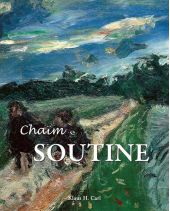 Chaïm Soutine (1893-1943), the unconventional and controversial painter of Belorussian origin, combines influences of classic European painting with Post-Impressionism and Expressionism. As a member of the Artists from Belarus, a group within the Parisian School, he created an oeuvre mainly consisting of landscapes, still lifes, and portraits. His individual style, characterised by displays of humour and despair and by use of luminous colours, makes him a modern master who is still little understood. ... Далее
Chaïm Soutine (1893-1943), the unconventional and controversial painter of Belorussian origin, combines influences of classic European painting with Post-Impressionism and Expressionism. As a member of the Artists from Belarus, a group within the Parisian School, he created an oeuvre mainly consisting of landscapes, still lifes, and portraits. His individual style, characterised by displays of humour and despair and by use of luminous colours, makes him a modern master who is still little understood. ... Далее -
21.
 In a country only unified since 1871, German culture and art is derived from ancient tradition. Studying German painting requires viewing it on a different scale, larger than the current geographical frontiers. From the Middle Ages through to the New Objectivity of the 20th century, we introduce you to the German artists who have marked history: Albrecht Dürer, the Romantic Caspar David Friedrich, and the Expressionist Otto Dix. Original in its themes, German painting always seeks harmony whilst remaining inquisitive. ... Далее
In a country only unified since 1871, German culture and art is derived from ancient tradition. Studying German painting requires viewing it on a different scale, larger than the current geographical frontiers. From the Middle Ages through to the New Objectivity of the 20th century, we introduce you to the German artists who have marked history: Albrecht Dürer, the Romantic Caspar David Friedrich, and the Expressionist Otto Dix. Original in its themes, German painting always seeks harmony whilst remaining inquisitive. ... Далее -
22.
 Mega Square Shoes focuses on the history of the shoe and elevates the shoe to the rank of a work of art. The author is a leading expert on the subject and curator of France‘s Shoe Museum, which holds the greatest shoe collection in the world, with 12,000 specimens.
Mega Square Shoes focuses on the history of the shoe and elevates the shoe to the rank of a work of art. The author is a leading expert on the subject and curator of France‘s Shoe Museum, which holds the greatest shoe collection in the world, with 12,000 specimens. -
23.
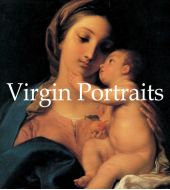 During the Renaissance, Italian painters would traditionally depict the wives of their patrons as Madonnas, often rendering them more beautiful than they actually were. Over centuries in religious paintings, the Madonna has been presented as the clement and protective mother of God. However, with the passing of time, Mary gradually lost some of her spiritual characteristics and became more mortal and accessible to human sentiments. Virgin Portraits illuminates this evolution and contains impressive works by Michelangelo, Caravaggio, Rubens, Fouquet, Dalí, and Kahlo. ... Далее
During the Renaissance, Italian painters would traditionally depict the wives of their patrons as Madonnas, often rendering them more beautiful than they actually were. Over centuries in religious paintings, the Madonna has been presented as the clement and protective mother of God. However, with the passing of time, Mary gradually lost some of her spiritual characteristics and became more mortal and accessible to human sentiments. Virgin Portraits illuminates this evolution and contains impressive works by Michelangelo, Caravaggio, Rubens, Fouquet, Dalí, and Kahlo. ... Далее -
24.
 Mega Square Herbarium is based on the work of Basilius Besler, the famous plant expert who, for the first time in history, described, painted and engraved over a thousand species of plants. His drawings are of great scientific as well as artistic value, and offer vivid insights into Europe’s eclectic flora. ... Далее
Mega Square Herbarium is based on the work of Basilius Besler, the famous plant expert who, for the first time in history, described, painted and engraved over a thousand species of plants. His drawings are of great scientific as well as artistic value, and offer vivid insights into Europe’s eclectic flora. ... Далее -
25.
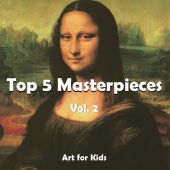 This book offers our young readers an enjoyable approach to the history of art by transforming five masterpieces into fun puzzles. Top 5 Masterpieces Vol. 2 provides parents and teachers with a wonderful way to develop children’s imaginations and grow their awareness of great art from an early age. ... Далее
This book offers our young readers an enjoyable approach to the history of art by transforming five masterpieces into fun puzzles. Top 5 Masterpieces Vol. 2 provides parents and teachers with a wonderful way to develop children’s imaginations and grow their awareness of great art from an early age. ... Далее -
26.
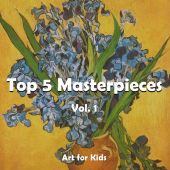 This book offers our young readers an enjoyable approach to the history of art by transforming five masterpieces into fun puzzles. Top 5 Masterpieces Vol. 1 provides parents and teachers with a wonderful way to develop children’s imaginations and grow their awareness of great art from an early age. ... Далее
This book offers our young readers an enjoyable approach to the history of art by transforming five masterpieces into fun puzzles. Top 5 Masterpieces Vol. 1 provides parents and teachers with a wonderful way to develop children’s imaginations and grow their awareness of great art from an early age. ... Далее -
27.
 Condemned by the Nazis as a degenerate artist, Franz Marc (1880-1916) was a German painter whose stark linearity and emotive use of color eloquently expressed the pain and trauma of war. In work such as his celebrated Fate of the Animals, Marc created a raw emotional expression of primitive violence which he called a premonition of the war which would eventually be the cause of his own untimely death at the age of 36. ... Далее
Condemned by the Nazis as a degenerate artist, Franz Marc (1880-1916) was a German painter whose stark linearity and emotive use of color eloquently expressed the pain and trauma of war. In work such as his celebrated Fate of the Animals, Marc created a raw emotional expression of primitive violence which he called a premonition of the war which would eventually be the cause of his own untimely death at the age of 36. ... Далее -
28.
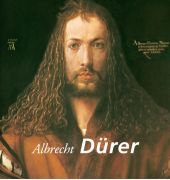 Dürer is the greatest of German artists and most representative of the German mind. He, like Leonardo, was a man of striking physical attractiveness, great charm of manner and conversation, and mental accomplishment, being well grounded in the sciences and mathematics of the day. His skill in draughtsmanship was extraordinary; Dürer is even more celebrated for his engravings on wood and copper than for his paintings. With both, the skill of his hand was at the service of the most minute observation and analytical research into the character and structure of form. Dürer, however, had not the feeling for abstract beauty and ideal grace that Leonardo possessed; but instead, a profound earnestness, a closer interest in humanity, and a more dramatic invention. Dürer was a great admirer of Luther; and in his own work is the equivalent of what was mighty in the Reformer. It is very serious and sincere; very human, and addressed the hearts and understanding of the masses. Nuremberg, his hometown, had become a great centre of printing and the chief distributor of books throughout Europe. Consequently, the art of engraving upon wood and copper, which may be called the pictorial branch of printing, was much encouraged. Of this opportunity Dürer took full advantage. The Renaissance in Germany was more a moral and intellectual than an artistic movement, partly due to northern conditions. The feeling for ideal grace and beauty is fostered by the study of the human form, and this had been flourishing predominantly in southern Europe. But Albrecht Dürer had a genius too powerful to be conquered. He remained profoundly Germanic in his stormy penchant for drama, as was his contemporary Mathias Grünewald, a fantastic visionary and rebel against all Italian seductions. Dürer, in spite of all his tense energy, dominated conflicting passions by a sovereign and speculative intelligence comparable with that of Leonardo. He, too, was on the border of two worlds, that of the Gothic age and that of the modern age, and on the border of two arts, being an engraver and draughtsman rather than a painter. ... Далее
Dürer is the greatest of German artists and most representative of the German mind. He, like Leonardo, was a man of striking physical attractiveness, great charm of manner and conversation, and mental accomplishment, being well grounded in the sciences and mathematics of the day. His skill in draughtsmanship was extraordinary; Dürer is even more celebrated for his engravings on wood and copper than for his paintings. With both, the skill of his hand was at the service of the most minute observation and analytical research into the character and structure of form. Dürer, however, had not the feeling for abstract beauty and ideal grace that Leonardo possessed; but instead, a profound earnestness, a closer interest in humanity, and a more dramatic invention. Dürer was a great admirer of Luther; and in his own work is the equivalent of what was mighty in the Reformer. It is very serious and sincere; very human, and addressed the hearts and understanding of the masses. Nuremberg, his hometown, had become a great centre of printing and the chief distributor of books throughout Europe. Consequently, the art of engraving upon wood and copper, which may be called the pictorial branch of printing, was much encouraged. Of this opportunity Dürer took full advantage. The Renaissance in Germany was more a moral and intellectual than an artistic movement, partly due to northern conditions. The feeling for ideal grace and beauty is fostered by the study of the human form, and this had been flourishing predominantly in southern Europe. But Albrecht Dürer had a genius too powerful to be conquered. He remained profoundly Germanic in his stormy penchant for drama, as was his contemporary Mathias Grünewald, a fantastic visionary and rebel against all Italian seductions. Dürer, in spite of all his tense energy, dominated conflicting passions by a sovereign and speculative intelligence comparable with that of Leonardo. He, too, was on the border of two worlds, that of the Gothic age and that of the modern age, and on the border of two arts, being an engraver and draughtsman rather than a painter. ... Далее -
29.
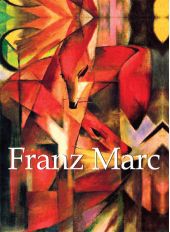 Condemned by the Nazis as a degenerate artist, Franz Marc (1880-1916) was a German painter whose stark linearity and emotive use of color eloquently expressed the pain and trauma of war. In work such as his celebrated Fate of the Animals, Marc created a raw emotional expression of primitive violence which he called a premonition of the war which would eventually be the cause of his own untimely death at the age of 36. ... Далее
Condemned by the Nazis as a degenerate artist, Franz Marc (1880-1916) was a German painter whose stark linearity and emotive use of color eloquently expressed the pain and trauma of war. In work such as his celebrated Fate of the Animals, Marc created a raw emotional expression of primitive violence which he called a premonition of the war which would eventually be the cause of his own untimely death at the age of 36. ... Далее -
30.
 Universally celebrated for the intricacy of his pointillist canvases, Georges Seurat (1859-1891) was a painter whose stunning union of art and science produced uniquely compelling results. Seurat’s intricate paintings could take years to complete, with the magnificent results impressing the viewer with both their scientific complexity and visual impact. His Un Dimanche Après-Midi à l’Île de la Grande Jatte (Sunday Afternoon on the Island of Grand Jatte) has held its place among the most treasured and distinguished pieces of 20th-century art. Klaus H. Carl offers readers an intriguing glimpse into the detailed scientific technique behind Seurat’s pointillist masterpieces. ... Далее
Universally celebrated for the intricacy of his pointillist canvases, Georges Seurat (1859-1891) was a painter whose stunning union of art and science produced uniquely compelling results. Seurat’s intricate paintings could take years to complete, with the magnificent results impressing the viewer with both their scientific complexity and visual impact. His Un Dimanche Après-Midi à l’Île de la Grande Jatte (Sunday Afternoon on the Island of Grand Jatte) has held its place among the most treasured and distinguished pieces of 20th-century art. Klaus H. Carl offers readers an intriguing glimpse into the detailed scientific technique behind Seurat’s pointillist masterpieces. ... Далее -
31.
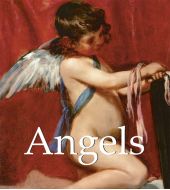 Even today, the splendid appearance of angels remains undiminished. Images of these heavenly and powerful messengers convey protection, innocence and calm, and have been an inspiration to religious artists throughout the history of art. This book illustrates the most impressive representations of angels, from delicate, whimsical cupids to majestic depictions of the archangel Michael, and from medieval to modern times. ... Далее
Even today, the splendid appearance of angels remains undiminished. Images of these heavenly and powerful messengers convey protection, innocence and calm, and have been an inspiration to religious artists throughout the history of art. This book illustrates the most impressive representations of angels, from delicate, whimsical cupids to majestic depictions of the archangel Michael, and from medieval to modern times. ... Далее -
32.
 Mega Square Herbarium is based on the work of Basilius Besler, the famous plant expert who, for the first time in history, described, painted and engraved over a thousand species of plants. His drawings are of great scientific as well as artistic value, and offer vivid insights into Europe’s eclectic flora. ... Далее
Mega Square Herbarium is based on the work of Basilius Besler, the famous plant expert who, for the first time in history, described, painted and engraved over a thousand species of plants. His drawings are of great scientific as well as artistic value, and offer vivid insights into Europe’s eclectic flora. ... Далее -
33.
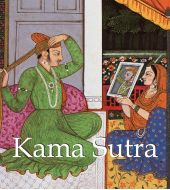 Mega Square Kama Sutra pays homage to the magic of love and is a universal educational manual. This edition is tastefully illustrated with refined frescos and delicate prints.
Mega Square Kama Sutra pays homage to the magic of love and is a universal educational manual. This edition is tastefully illustrated with refined frescos and delicate prints. -
34.
 The self-appointed “leader” of the artists’ group Die Brücke (Bridge), founded in Dresden in 1905, Ernst Ludwig Kirchner was a key figure in the early development of German Expressionism. His first works show the influence of Impressionism, Post-impressionism and Jugendstil, but by about 1909, Kirchner was painting in a distinctive, expressive manner with bold, loose brushwork, vibrant and non-naturalistic colours and heightened gestures. He worked in the studio from sketches made very rapidly from life, often from moving figures, from scenes of life out in the city or from the Die Brücke group’s trips to the countryside. A little later he began making roughly-hewn sculptures from single blocks of wood. Around the time of his move to Berlin, in 1912, Kirchner’s style in both painting and his prolific graphic works became more angular, characterized by jagged lines, slender, attenuated forms and often, a greater sense of nervousness. These features can be seen to most powerful effect in his Berlin street scenes. With the outbreak of the First World War, Kirchner became physically weak and prone to anxiety. Conscripted, he was deeply traumatised by his brief experience of military training during the First World War. From 1917 until his death by suicide in 1938, he lived a reclusive, though artistically productive life in the tranquillity of the Swiss Alps, near Davos. ... Далее
The self-appointed “leader” of the artists’ group Die Brücke (Bridge), founded in Dresden in 1905, Ernst Ludwig Kirchner was a key figure in the early development of German Expressionism. His first works show the influence of Impressionism, Post-impressionism and Jugendstil, but by about 1909, Kirchner was painting in a distinctive, expressive manner with bold, loose brushwork, vibrant and non-naturalistic colours and heightened gestures. He worked in the studio from sketches made very rapidly from life, often from moving figures, from scenes of life out in the city or from the Die Brücke group’s trips to the countryside. A little later he began making roughly-hewn sculptures from single blocks of wood. Around the time of his move to Berlin, in 1912, Kirchner’s style in both painting and his prolific graphic works became more angular, characterized by jagged lines, slender, attenuated forms and often, a greater sense of nervousness. These features can be seen to most powerful effect in his Berlin street scenes. With the outbreak of the First World War, Kirchner became physically weak and prone to anxiety. Conscripted, he was deeply traumatised by his brief experience of military training during the First World War. From 1917 until his death by suicide in 1938, he lived a reclusive, though artistically productive life in the tranquillity of the Swiss Alps, near Davos. ... Далее -
35.
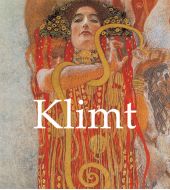 “I am not interested in myself as a subject for painting, but in others, particularly women…”Beautiful, sensuous and above all erotic, Gustav Klimt’s paintings speak of a world of opulence and leisure, which seems aeons away from the harsh, post-modern environment we live in now. The subjects he treats – allegories, portraits, landscapes and erotic figures – contain virtually no reference to external events, but strive rather to create a world where beauty, above everything else, is dominant. His use of colour and pattern was profoundly influenced by the art of Japan, ancient Egypt, and Byzantium. Ravenne, the flat, two-dimensional perspective of his paintings, and the frequently stylised quality of his images form an oeuvre imbued with a profound sensuality and one where the figure of woman, above all, reigns supreme. Klimt’s very first works brought him success at an unusually young age. Gustav, born in 1862, obtained a state grant to study at Kunstgewerbeschule (the Vienna School of Arts and Crafts) at the age of fourteen. His talents as a draughtsman and painter were quickly noticed, and in 1879 he formed the Künstlercompagnie (Artists’ Company) with his brother Ernst and another student, Franz Matsch. The latter part of the nineteenth century was a period of great architectural activity in Vienna. In 1857, the Emperor Franz Joseph had ordered the destruction of the fortifications that had surrounded the medieval city centre. The Ringstrasse was the result, a budding new district with magnificent buildings and beautiful parks, all paid for by public expenses. Therefore the young Klimt and his partners had ample opportunities to show off their talents, and they received early commissions to contribute to the decorations for the pageant organised to celebrate the silver wedding anniversary of the Emperor Franz Joseph and the Empress Elisabeth. In 1894, Matsch moved out of their communal studio, and in 1897 Klimt, together with his closest friends, resigned from the Künstlerhausgenossenschaft (the Cooperative Society of Austrian Artists) to form a new movement known as the Secession, of which he was immediately elected president. The Secession was a great success, holding both a first and second exhibition in 1898. The movement made enough money to commission its very own building, designed for it by the architect Joseph Maria Olbrich. Above the entrance was its motto: “To each age its art, to art its freedom.” From around 1897 onward, Klimt spent almost every summer on the Attersee with the Flöge family. These were periods of peace and tranquillity in which he produced the landscape paintings constituting almost a quarter of his entire oeuvre. Klimt made sketches for virtually everything he did. Sometimes there were over a hundred drawings for one painting, each showing a different detail – a piece of clothing or jewellery, or a simple gesture. Just how exceptional Gustav Klimt was is perhaps reflected in the fact that he had no predecessors and no real followers. He admired Rodin and Whistler without slavishly copying them, and was admired in turn by the younger Viennese painters Egon Schiele and Oskar Kokoschka, both of whom were greatly influenced by Klimt. ... Далее
“I am not interested in myself as a subject for painting, but in others, particularly women…”Beautiful, sensuous and above all erotic, Gustav Klimt’s paintings speak of a world of opulence and leisure, which seems aeons away from the harsh, post-modern environment we live in now. The subjects he treats – allegories, portraits, landscapes and erotic figures – contain virtually no reference to external events, but strive rather to create a world where beauty, above everything else, is dominant. His use of colour and pattern was profoundly influenced by the art of Japan, ancient Egypt, and Byzantium. Ravenne, the flat, two-dimensional perspective of his paintings, and the frequently stylised quality of his images form an oeuvre imbued with a profound sensuality and one where the figure of woman, above all, reigns supreme. Klimt’s very first works brought him success at an unusually young age. Gustav, born in 1862, obtained a state grant to study at Kunstgewerbeschule (the Vienna School of Arts and Crafts) at the age of fourteen. His talents as a draughtsman and painter were quickly noticed, and in 1879 he formed the Künstlercompagnie (Artists’ Company) with his brother Ernst and another student, Franz Matsch. The latter part of the nineteenth century was a period of great architectural activity in Vienna. In 1857, the Emperor Franz Joseph had ordered the destruction of the fortifications that had surrounded the medieval city centre. The Ringstrasse was the result, a budding new district with magnificent buildings and beautiful parks, all paid for by public expenses. Therefore the young Klimt and his partners had ample opportunities to show off their talents, and they received early commissions to contribute to the decorations for the pageant organised to celebrate the silver wedding anniversary of the Emperor Franz Joseph and the Empress Elisabeth. In 1894, Matsch moved out of their communal studio, and in 1897 Klimt, together with his closest friends, resigned from the Künstlerhausgenossenschaft (the Cooperative Society of Austrian Artists) to form a new movement known as the Secession, of which he was immediately elected president. The Secession was a great success, holding both a first and second exhibition in 1898. The movement made enough money to commission its very own building, designed for it by the architect Joseph Maria Olbrich. Above the entrance was its motto: “To each age its art, to art its freedom.” From around 1897 onward, Klimt spent almost every summer on the Attersee with the Flöge family. These were periods of peace and tranquillity in which he produced the landscape paintings constituting almost a quarter of his entire oeuvre. Klimt made sketches for virtually everything he did. Sometimes there were over a hundred drawings for one painting, each showing a different detail – a piece of clothing or jewellery, or a simple gesture. Just how exceptional Gustav Klimt was is perhaps reflected in the fact that he had no predecessors and no real followers. He admired Rodin and Whistler without slavishly copying them, and was admired in turn by the younger Viennese painters Egon Schiele and Oskar Kokoschka, both of whom were greatly influenced by Klimt. ... Далее -
36.
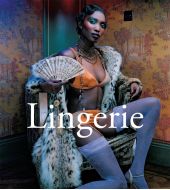 What do the thousands of images of bras and panties on perfectly sculpted bodies that we see spread across billboards and magazines say about our society?
What do the thousands of images of bras and panties on perfectly sculpted bodies that we see spread across billboards and magazines say about our society? -
37.
 Mega Square Shoes focuses on the history of the shoe and elevates the shoe to the rank of a work of art. The author is a leading expert on the subject and curator of France‘s Shoe Museum, which holds the greatest shoe collection in the world, with 12,000 specimens.
Mega Square Shoes focuses on the history of the shoe and elevates the shoe to the rank of a work of art. The author is a leading expert on the subject and curator of France‘s Shoe Museum, which holds the greatest shoe collection in the world, with 12,000 specimens. -
38.
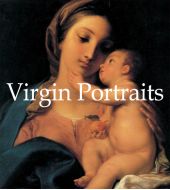 During the Renaissance, Italian painters would traditionally depict the wives of their patrons as Madonnas, often rendering them more beautiful than they actually were. Over centuries in religious paintings, the Madonna has been presented as the clement and protective mother of God. However, with the passing of time, Mary gradually lost some of her spiritual characteristics and became more mortal and accessible to human sentiments. Virgin Portraits illuminates this evolution and contains impressive works by Michelangelo, Caravaggio, Rubens, Fouquet, Dalí, and Kahlo. ... Далее
During the Renaissance, Italian painters would traditionally depict the wives of their patrons as Madonnas, often rendering them more beautiful than they actually were. Over centuries in religious paintings, the Madonna has been presented as the clement and protective mother of God. However, with the passing of time, Mary gradually lost some of her spiritual characteristics and became more mortal and accessible to human sentiments. Virgin Portraits illuminates this evolution and contains impressive works by Michelangelo, Caravaggio, Rubens, Fouquet, Dalí, and Kahlo. ... Далее -
39.
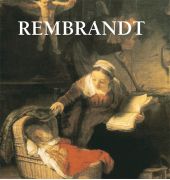 Rembrandt is completely mysterious in his spirit, his character, his life, his work and his method of painting. What we can divine of his essential nature comes through his painting and the trivial or tragic incidents of his unfortunate life; his penchant for ostentatious living forced him to declare bankruptcy. His misfortunes are not entirely explicable, and his oeuvre reflects disturbing notions and contradictory impulses emerging from the depths of his being, like the light and shade of his pictures. In spite of this, nothing perhaps in the history of art gives a more profound impression of unity than his paintings, composed though they are of such different elements, full of complex significations. One feels as if his intellect, that genial, great, free mind, bold and ignorant of all servitude and which led him to the loftiest meditations and the most sublime reveries, derived from the same source as his emotions. From this comes the tragic element he imprinted on everything he painted, irrespective of subject; there was inequality in his work as well as the sublime, which may be seen as the inevitable consequence of such a tumultuous existence. It seems as though this singular, strange, attractive and almost enigmatic personality was slow in developing, or at least in attaining its complete expansion. Rembrandt showed talent and an original vision of the world early, as evidenced in his youthful etchings and his first self-portraits of about 1630. In painting, however, he did not immediately find the method he needed to express the still incomprehensible things he had to say, that audacious, broad and personal method which we admire in the masterpieces of his maturity and old age. In spite of its subtlety, it was adjudged brutal in his day and certainly contributed to alienate his public. From the time of his beginnings and of his successes, however, lighting played a major part in his conception of painting and he made it the principal instrument of his investigations into the arcana of interior life. It already revealed to him the poetry of human physiognomy when he painted The Philosopher in Meditation or the Holy Family, so deliciously absorbed in its modest intimacy, or, for example, in The Angel Raphael leaving Tobias. Soon he asked for something more. The Night Watch marks at once the apotheosis of his reputation. He had a universal curiosity and he lived, meditated, dreamed and painted thrown back on himself. He thought of the great Venetians, borrowing their subjects and making of them an art out of the inner life of profound emotion. Mythological and religious subjects were treated as he treated his portraits. For all that he took from reality and even from the works of others, he transmuted it instantly into his own substance. ... Далее
Rembrandt is completely mysterious in his spirit, his character, his life, his work and his method of painting. What we can divine of his essential nature comes through his painting and the trivial or tragic incidents of his unfortunate life; his penchant for ostentatious living forced him to declare bankruptcy. His misfortunes are not entirely explicable, and his oeuvre reflects disturbing notions and contradictory impulses emerging from the depths of his being, like the light and shade of his pictures. In spite of this, nothing perhaps in the history of art gives a more profound impression of unity than his paintings, composed though they are of such different elements, full of complex significations. One feels as if his intellect, that genial, great, free mind, bold and ignorant of all servitude and which led him to the loftiest meditations and the most sublime reveries, derived from the same source as his emotions. From this comes the tragic element he imprinted on everything he painted, irrespective of subject; there was inequality in his work as well as the sublime, which may be seen as the inevitable consequence of such a tumultuous existence. It seems as though this singular, strange, attractive and almost enigmatic personality was slow in developing, or at least in attaining its complete expansion. Rembrandt showed talent and an original vision of the world early, as evidenced in his youthful etchings and his first self-portraits of about 1630. In painting, however, he did not immediately find the method he needed to express the still incomprehensible things he had to say, that audacious, broad and personal method which we admire in the masterpieces of his maturity and old age. In spite of its subtlety, it was adjudged brutal in his day and certainly contributed to alienate his public. From the time of his beginnings and of his successes, however, lighting played a major part in his conception of painting and he made it the principal instrument of his investigations into the arcana of interior life. It already revealed to him the poetry of human physiognomy when he painted The Philosopher in Meditation or the Holy Family, so deliciously absorbed in its modest intimacy, or, for example, in The Angel Raphael leaving Tobias. Soon he asked for something more. The Night Watch marks at once the apotheosis of his reputation. He had a universal curiosity and he lived, meditated, dreamed and painted thrown back on himself. He thought of the great Venetians, borrowing their subjects and making of them an art out of the inner life of profound emotion. Mythological and religious subjects were treated as he treated his portraits. For all that he took from reality and even from the works of others, he transmuted it instantly into his own substance. ... Далее -
40.
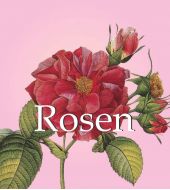 Das Mega Square-Buch Rosen präsentiert eine große Anzahl verschiedener Arten dieser einzigartigen Blume, die so viel Gefühl und kulturelle Bedeutung trägt. Durch seinen künstlerischen, aber auch botanischen Wert ist es wie gemacht für Kunstliebhaber und jeden, der die Schönheit und Vielseitigkeit von Rosen liebt. Jedes der farbenfrohen Bilder ist durch wertvolle botanische Informationen ergänzt und das praktische Mega Square-Format macht es zum perfekten Geschenk. ... Далее
Das Mega Square-Buch Rosen präsentiert eine große Anzahl verschiedener Arten dieser einzigartigen Blume, die so viel Gefühl und kulturelle Bedeutung trägt. Durch seinen künstlerischen, aber auch botanischen Wert ist es wie gemacht für Kunstliebhaber und jeden, der die Schönheit und Vielseitigkeit von Rosen liebt. Jedes der farbenfrohen Bilder ist durch wertvolle botanische Informationen ergänzt und das praktische Mega Square-Format macht es zum perfekten Geschenk. ... Далее -
41.
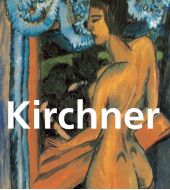 Ernst Ludwig Kirchner (Aschaffenburg, 1880 – Frauenkirch, 1938) «Leader » autoproclamé du groupe d’artistes die Brücke (Pont), fondé à Dresde en 1905, Ernst Ludwig Kirchner, joua un rôle central dans les premiers développements de l’expressionnisme allemand (fig.186). Ses premières oeuvres révèlent l’influence de l’Impressionnisme, du postimpressionnisme et du Jugendstil, mais dès 1909, Kirchner peignait d’une manière distinctive et expressive grâce à un coup de pinceau audacieux, mais détendu, des couleurs vives et non naturalistes, et des gestes intenses. Il travaillait dans son atelier à partir d’esquisses réalisées très rapidement, souvent à partir de figures mouvantes, de scènes inspirées de la vie en ville ou des excursions du Brücke à la campagne. Un peu plus tard, il commença à réaliser des sculptures grossièrement taillées dans des blocs de bois. A peu près au moment où il s’installa à Berlin, en 1912, le style de Kirchner, aussi bien de sa peinture que de son oeuvre graphique prolifique, devint plus anguleux, caractérisé par des lignes déchiquetées, des formes élancées et atténuées, et, souvent, un plus grand sentiment de nervosité. Ces traits se retrouvent dans leur expression la plus forte dans ses scènes de rue berlinoises (évoquées dans le chapitre «La Métropole et la Modernité »). Avec le déclenchement de la Première Guerre mondiale, Kirchner devint physiquement faible et enclin à l’anxiété. Conscrit, il fut profondément traumatisé par sa brève expérience de l’entraînement militaire pendant le conflit. De 1917 jusqu’à sa mort par suicide en 1938, il vécut une existence de reclus, bien qu’artistiquement productive, dans la tranquillité des Alpes suisses, près de Davos. ... Далее
Ernst Ludwig Kirchner (Aschaffenburg, 1880 – Frauenkirch, 1938) «Leader » autoproclamé du groupe d’artistes die Brücke (Pont), fondé à Dresde en 1905, Ernst Ludwig Kirchner, joua un rôle central dans les premiers développements de l’expressionnisme allemand (fig.186). Ses premières oeuvres révèlent l’influence de l’Impressionnisme, du postimpressionnisme et du Jugendstil, mais dès 1909, Kirchner peignait d’une manière distinctive et expressive grâce à un coup de pinceau audacieux, mais détendu, des couleurs vives et non naturalistes, et des gestes intenses. Il travaillait dans son atelier à partir d’esquisses réalisées très rapidement, souvent à partir de figures mouvantes, de scènes inspirées de la vie en ville ou des excursions du Brücke à la campagne. Un peu plus tard, il commença à réaliser des sculptures grossièrement taillées dans des blocs de bois. A peu près au moment où il s’installa à Berlin, en 1912, le style de Kirchner, aussi bien de sa peinture que de son oeuvre graphique prolifique, devint plus anguleux, caractérisé par des lignes déchiquetées, des formes élancées et atténuées, et, souvent, un plus grand sentiment de nervosité. Ces traits se retrouvent dans leur expression la plus forte dans ses scènes de rue berlinoises (évoquées dans le chapitre «La Métropole et la Modernité »). Avec le déclenchement de la Première Guerre mondiale, Kirchner devint physiquement faible et enclin à l’anxiété. Conscrit, il fut profondément traumatisé par sa brève expérience de l’entraînement militaire pendant le conflit. De 1917 jusqu’à sa mort par suicide en 1938, il vécut une existence de reclus, bien qu’artistiquement productive, dans la tranquillité des Alpes suisses, près de Davos. ... Далее -
42.
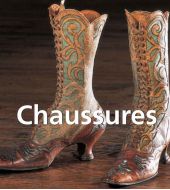 Qu’y-a-t-il de plus banal qu’une paire de chaussures ? Pourtant, aujourd’hui encore, la moitié de l’humanité n’en connaît pas l’usage. Dans un monde où la chaussure est devenue un objet de consommation, comment oublier que nos arrière-grands-parents l’utilisaient pour les cérémonies et autres occasions exceptionnelles. L’industrie a accompli son devoir : produire en grande quantité à des prix plus abordables. Mais il fut un temps où la chaussure symbolisait la force des légions romaines, la puissance des seigneurs du Moyen Âge européen ou encore l’oppression des femmes chinoises. C’est une histoire longue et passionnante que l’auteur Marie-Josèphe Bossan, conservateur du Musée International de la Chaussure de Romans, conte avec rigueur et talent. Appuyant son analyse sur une iconographie choisie avec méthode, l’auteur donne à ces objets de tous les jours, des lettres de noblesse qui nous interpellent sur les modes et les valeurs de nos civilisations. ... Далее
Qu’y-a-t-il de plus banal qu’une paire de chaussures ? Pourtant, aujourd’hui encore, la moitié de l’humanité n’en connaît pas l’usage. Dans un monde où la chaussure est devenue un objet de consommation, comment oublier que nos arrière-grands-parents l’utilisaient pour les cérémonies et autres occasions exceptionnelles. L’industrie a accompli son devoir : produire en grande quantité à des prix plus abordables. Mais il fut un temps où la chaussure symbolisait la force des légions romaines, la puissance des seigneurs du Moyen Âge européen ou encore l’oppression des femmes chinoises. C’est une histoire longue et passionnante que l’auteur Marie-Josèphe Bossan, conservateur du Musée International de la Chaussure de Romans, conte avec rigueur et talent. Appuyant son analyse sur une iconographie choisie avec méthode, l’auteur donne à ces objets de tous les jours, des lettres de noblesse qui nous interpellent sur les modes et les valeurs de nos civilisations. ... Далее -
43.
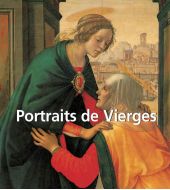 L’art a été profondément marqué par la figure de la Vierge Marie, le symbole de la maternité, rayonnante de jeunesse, de tendresse et de compassion depuis deux mille ans. Trouvant en elle une source d’inspiration inépuisable, les artistes ont utilisé cette figure pour exprimer nos souffrances et nos joies. L’auteur Kyra Belán nous emmène dans une analyse du sens à trouver dans les images de la Vierge – à partir d’interprétations personnelles et de réflexions plus spirituelles. Les œuvres d’art constituent des commentaires visuels, à la fois sur l’évolution de l’art occidental et sur celle de l’image de la femme dans la société. Avec plus de 200 illustrations, deux mille ans d’histoire sont exprimés à travers une seulle image, celle de la Vierge Marie, mère du Christ. ... Далее
L’art a été profondément marqué par la figure de la Vierge Marie, le symbole de la maternité, rayonnante de jeunesse, de tendresse et de compassion depuis deux mille ans. Trouvant en elle une source d’inspiration inépuisable, les artistes ont utilisé cette figure pour exprimer nos souffrances et nos joies. L’auteur Kyra Belán nous emmène dans une analyse du sens à trouver dans les images de la Vierge – à partir d’interprétations personnelles et de réflexions plus spirituelles. Les œuvres d’art constituent des commentaires visuels, à la fois sur l’évolution de l’art occidental et sur celle de l’image de la femme dans la société. Avec plus de 200 illustrations, deux mille ans d’histoire sont exprimés à travers une seulle image, celle de la Vierge Marie, mère du Christ. ... Далее -
44.
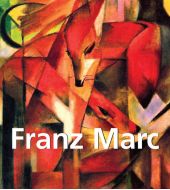 Condamné par les Nazis comme étant un artiste « dégénéré », Franz Marc (1880-1916) est un peintre allemand dont l’utilisation des lignes sèches et de la couleur exprime de manière éloquente la douleur et le traumatisme de la guerre. Dans des toiles telles que La Mort des animaux, Marc a créé l’émotion brute d’une violence primitive, qu’il a qualifiée de prémonition de la guerre, guerre qui allait être la cause de sa mort à l’âge de trente-six ans. ... Далее
Condamné par les Nazis comme étant un artiste « dégénéré », Franz Marc (1880-1916) est un peintre allemand dont l’utilisation des lignes sèches et de la couleur exprime de manière éloquente la douleur et le traumatisme de la guerre. Dans des toiles telles que La Mort des animaux, Marc a créé l’émotion brute d’une violence primitive, qu’il a qualifiée de prémonition de la guerre, guerre qui allait être la cause de sa mort à l’âge de trente-six ans. ... Далее -
45.
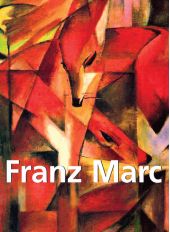 Condamné par les Nazis comme étant un artiste « dégénéré », Franz Marc (1880-1916) est un peintre allemand dont l’utilisation des lignes sèches et de la couleur exprime de manière éloquente la douleur et le traumatisme de la guerre. Dans des toiles telles que La Mort des animaux, Marc a créé l’émotion brute d’une violence primitive, qu’il a qualifiée de prémonition de la guerre, guerre qui allait être la cause de sa mort à l’âge de trente-six ans. ... Далее
Condamné par les Nazis comme étant un artiste « dégénéré », Franz Marc (1880-1916) est un peintre allemand dont l’utilisation des lignes sèches et de la couleur exprime de manière éloquente la douleur et le traumatisme de la guerre. Dans des toiles telles que La Mort des animaux, Marc a créé l’émotion brute d’une violence primitive, qu’il a qualifiée de prémonition de la guerre, guerre qui allait être la cause de sa mort à l’âge de trente-six ans. ... Далее -
46.
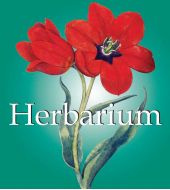 Das Mega Square Herbarium basiert auf dem botanischen Werk des berühmten Pflanzenexperten Basilius Beslers, der als einer der ersten über 1000 verschiedene Pflanzenarten beschrieb, zeichnete und präparierte. Seine Zeichnungen haben sowohl großen wissenschaftlichen als auch künstlerischen Wert und geben lebendige Einblick in die vielseitige Flora Europas. Diese Mega Square Ausgabe mit seinem praktischen Format ist ein ideales Geschenk. ... Далее
Das Mega Square Herbarium basiert auf dem botanischen Werk des berühmten Pflanzenexperten Basilius Beslers, der als einer der ersten über 1000 verschiedene Pflanzenarten beschrieb, zeichnete und präparierte. Seine Zeichnungen haben sowohl großen wissenschaftlichen als auch künstlerischen Wert und geben lebendige Einblick in die vielseitige Flora Europas. Diese Mega Square Ausgabe mit seinem praktischen Format ist ein ideales Geschenk. ... Далее -
47.
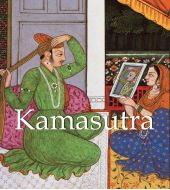 Die Mega Square Ausgabe Kama Sutra ist eine Hommage an den Zauber der Liebe und ein universelles Verhaltenshandbuch. Raffinierte Fresken und filigrane Drucke illustrieren es mit großer Detailliebe. Sein handliches Format macht es zu einem idealen Geschenk.
Die Mega Square Ausgabe Kama Sutra ist eine Hommage an den Zauber der Liebe und ein universelles Verhaltenshandbuch. Raffinierte Fresken und filigrane Drucke illustrieren es mit großer Detailliebe. Sein handliches Format macht es zu einem idealen Geschenk. -
48.
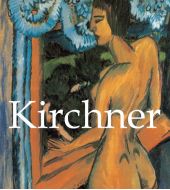 Der selbst ernannte Wortführer der 1905 in Dresden gegründeten Künstlergruppe Die Brücke, Ernst-Ludwig Kirchner, war eine Schlüsselfigur des deutschen Expressionismus. Seine frühen Arbeiten zeigen zwar Einflüsse des Impressionismus und Jugendstils, doch malte Kirchner um 1909 in einer ihm eigenen, ausdrucksstarken Art mit forschen, lockeren Pinselstrichen, leuchtenden und nicht-naturalistischen Farben und deutlich herausgestellten Gesten. Im Atelier arbeitete er mit oftmals innerhalb kurzer Zeit nach der Natur erstellten Skizzen, auf denen häufig bewegte Figuren oder Szenen aus dem Großstadtleben zu sehen sind. Ungefähr zu der Zeit, als er 1912 nach Berlin zog, wurde Kirchners Stil sowohl in der Malerei als auch in seinen zahlreichen grafischen Arbeiten kantiger, von zackigen Linien und häufig einer gewissen Nervosität geprägt, wie etwa in seinen eindrucksvollen Berliner Straßenszenen. Kirchner erlebte den Ausbruch des Ersten Weltkriegs körperlich geschwächt und verängstigt. Die kurze Erfahrung seiner Ausbildung in der Armee erzeugte in ihm ein tiefes Trauma. Von 1917 bis zu seinem Freitod im Jahr 1938 lebte er zurückgezogen, wenn auch künstlerisch produktiv, nahe Davos in der Ruhe der Schweizer Alpen. ... Далее
Der selbst ernannte Wortführer der 1905 in Dresden gegründeten Künstlergruppe Die Brücke, Ernst-Ludwig Kirchner, war eine Schlüsselfigur des deutschen Expressionismus. Seine frühen Arbeiten zeigen zwar Einflüsse des Impressionismus und Jugendstils, doch malte Kirchner um 1909 in einer ihm eigenen, ausdrucksstarken Art mit forschen, lockeren Pinselstrichen, leuchtenden und nicht-naturalistischen Farben und deutlich herausgestellten Gesten. Im Atelier arbeitete er mit oftmals innerhalb kurzer Zeit nach der Natur erstellten Skizzen, auf denen häufig bewegte Figuren oder Szenen aus dem Großstadtleben zu sehen sind. Ungefähr zu der Zeit, als er 1912 nach Berlin zog, wurde Kirchners Stil sowohl in der Malerei als auch in seinen zahlreichen grafischen Arbeiten kantiger, von zackigen Linien und häufig einer gewissen Nervosität geprägt, wie etwa in seinen eindrucksvollen Berliner Straßenszenen. Kirchner erlebte den Ausbruch des Ersten Weltkriegs körperlich geschwächt und verängstigt. Die kurze Erfahrung seiner Ausbildung in der Armee erzeugte in ihm ein tiefes Trauma. Von 1917 bis zu seinem Freitod im Jahr 1938 lebte er zurückgezogen, wenn auch künstlerisch produktiv, nahe Davos in der Ruhe der Schweizer Alpen. ... Далее -
49.
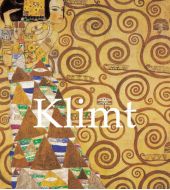 Gustav Klimt (1862-1918) war zum Ende des 19. Jahrhunderts nicht nur einer der einflussreichsten Künstler, sondern gründete zudem die Bewegung der Wiener Secession. Mithilfe dieser Bewegung übte er Kritik an der traditionellen Kunst, die sich durch ihren Widerstand gegen Veränderungen sowie Intoleranz gegenüber bestimmten modernen Vorstellungen auszeichnete. Klimt ließ sich durch den langsamen aber sicheren Niedergang sowie die Vielfalt der Kulturen der Österreichisch-Ungarischen Monarchie inspirieren. Bei Klimt spielten Erotik und Sinnlichkeit eine sehr große Rolle, und neben Schiele und Kokoschka zählte er zu den großen Meistern des Expressionismus. Das vorliegende Buch vereint eine erlesene Auswahl Klimts bekanntester Gemälde und einen Text, der den außergewöhnlichen Eklektizismus dieses großen Künstlers zu vermitteln vermag. ... Далее
Gustav Klimt (1862-1918) war zum Ende des 19. Jahrhunderts nicht nur einer der einflussreichsten Künstler, sondern gründete zudem die Bewegung der Wiener Secession. Mithilfe dieser Bewegung übte er Kritik an der traditionellen Kunst, die sich durch ihren Widerstand gegen Veränderungen sowie Intoleranz gegenüber bestimmten modernen Vorstellungen auszeichnete. Klimt ließ sich durch den langsamen aber sicheren Niedergang sowie die Vielfalt der Kulturen der Österreichisch-Ungarischen Monarchie inspirieren. Bei Klimt spielten Erotik und Sinnlichkeit eine sehr große Rolle, und neben Schiele und Kokoschka zählte er zu den großen Meistern des Expressionismus. Das vorliegende Buch vereint eine erlesene Auswahl Klimts bekanntester Gemälde und einen Text, der den außergewöhnlichen Eklektizismus dieses großen Künstlers zu vermitteln vermag. ... Далее -
50.
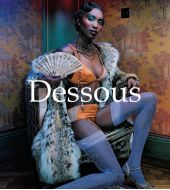 Was sagen die abertausenden Bilder von BHs und Unterwäsche an perfekten Körpern, die wir täglich auf unzähligen Plakaten und in Magazinen sehen, über unsere Gesellschaft aus? Viele Frauen kleiden sich in aufreizenden Dessous, um Männern zu gefallen, zugleich aber haben sie sie seit der Antike stets unter Kleidung verborgen. Folglich müssen Dessous mehr sein als nur ein erotisches Lockmittel. Die Autoren haben anhand der Ikonografie der letzten Jahrhunderte die Beziehungen zwichen Dessous und Gesellschaft, Wirtschaft sowie persönlicher Intimität untersucht. Sie verbinden weibliche Unterwäsche mit der Emanzipation, indem sie hinterfragen, ob Dessous neue Freiheiten erschließen oder ob sie sich nur gesellschaftlichen Voraussetzungen anpassen. Dieses Mega Square Buch enthält Bilder vom 17. bis zum 21. Jahrhundert und sein handliches Format macht es zu einem idealen Geschenk. ... Далее
Was sagen die abertausenden Bilder von BHs und Unterwäsche an perfekten Körpern, die wir täglich auf unzähligen Plakaten und in Magazinen sehen, über unsere Gesellschaft aus? Viele Frauen kleiden sich in aufreizenden Dessous, um Männern zu gefallen, zugleich aber haben sie sie seit der Antike stets unter Kleidung verborgen. Folglich müssen Dessous mehr sein als nur ein erotisches Lockmittel. Die Autoren haben anhand der Ikonografie der letzten Jahrhunderte die Beziehungen zwichen Dessous und Gesellschaft, Wirtschaft sowie persönlicher Intimität untersucht. Sie verbinden weibliche Unterwäsche mit der Emanzipation, indem sie hinterfragen, ob Dessous neue Freiheiten erschließen oder ob sie sich nur gesellschaftlichen Voraussetzungen anpassen. Dieses Mega Square Buch enthält Bilder vom 17. bis zum 21. Jahrhundert und sein handliches Format macht es zu einem idealen Geschenk. ... Далее -
51.
 Rembrandt is completely mysterious in his spirit, his character, his life, his work and his method of painting. What we can divine of his essential nature comes through his painting and the trivial or tragic incidents of his unfortunate life; his penchant for ostentatious living forced him to declare bankruptcy. His misfortunes are not entirely explicable, and his oeuvre reflects disturbing notions and contradictory impulses emerging from the depths of his being, like the light and shade of his pictures. In spite of this, nothing perhaps in the history of art gives a more profound impression of unity than his paintings, composed though they are of such different elements, full of complex significations. One feels as if his intellect, that genial, great, free mind, bold and ignorant of all servitude and which led him to the loftiest meditations and the most sublime reveries, derived from the same source as his emotions. From this comes the tragic element he imprinted on everything he painted, irrespective of subject; there was inequality in his work as well as the sublime, which may be seen as the inevitable consequence of such a tumultuous existence. It seems as though this singular, strange, attractive and almost enigmatic personality was slow in developing, or at least in attaining its complete expansion. Rembrandt showed talent and an original vision of the world early, as evidenced in his youthful etchings and his first self-portraits of about 1630. In painting, however, he did not immediately find the method he needed to express the still incomprehensible things he had to say, that audacious, broad and personal method which we admire in the masterpieces of his maturity and old age. In spite of its subtlety, it was adjudged brutal in his day and certainly contributed to alienate his public. From the time of his beginnings and of his successes, however, lighting played a major part in his conception of painting and he made it the principal instrument of his investigations into the arcana of interior life. It already revealed to him the poetry of human physiognomy when he painted The Philosopher in Meditation or the Holy Family, so deliciously absorbed in its modest intimacy, or, for example, in The Angel Raphael leaving Tobias. Soon he asked for something more. The Night Watch marks at once the apotheosis of his reputation. He had a universal curiosity and he lived, meditated, dreamed and painted thrown back on himself. He thought of the great Venetians, borrowing their subjects and making of them an art out of the inner life of profound emotion. Mythological and religious subjects were treated as he treated his portraits. For all that he took from reality and even from the works of others, he transmuted it instantly into his own substance. ... Далее
Rembrandt is completely mysterious in his spirit, his character, his life, his work and his method of painting. What we can divine of his essential nature comes through his painting and the trivial or tragic incidents of his unfortunate life; his penchant for ostentatious living forced him to declare bankruptcy. His misfortunes are not entirely explicable, and his oeuvre reflects disturbing notions and contradictory impulses emerging from the depths of his being, like the light and shade of his pictures. In spite of this, nothing perhaps in the history of art gives a more profound impression of unity than his paintings, composed though they are of such different elements, full of complex significations. One feels as if his intellect, that genial, great, free mind, bold and ignorant of all servitude and which led him to the loftiest meditations and the most sublime reveries, derived from the same source as his emotions. From this comes the tragic element he imprinted on everything he painted, irrespective of subject; there was inequality in his work as well as the sublime, which may be seen as the inevitable consequence of such a tumultuous existence. It seems as though this singular, strange, attractive and almost enigmatic personality was slow in developing, or at least in attaining its complete expansion. Rembrandt showed talent and an original vision of the world early, as evidenced in his youthful etchings and his first self-portraits of about 1630. In painting, however, he did not immediately find the method he needed to express the still incomprehensible things he had to say, that audacious, broad and personal method which we admire in the masterpieces of his maturity and old age. In spite of its subtlety, it was adjudged brutal in his day and certainly contributed to alienate his public. From the time of his beginnings and of his successes, however, lighting played a major part in his conception of painting and he made it the principal instrument of his investigations into the arcana of interior life. It already revealed to him the poetry of human physiognomy when he painted The Philosopher in Meditation or the Holy Family, so deliciously absorbed in its modest intimacy, or, for example, in The Angel Raphael leaving Tobias. Soon he asked for something more. The Night Watch marks at once the apotheosis of his reputation. He had a universal curiosity and he lived, meditated, dreamed and painted thrown back on himself. He thought of the great Venetians, borrowing their subjects and making of them an art out of the inner life of profound emotion. Mythological and religious subjects were treated as he treated his portraits. For all that he took from reality and even from the works of others, he transmuted it instantly into his own substance. ... Далее
Комментарии:


